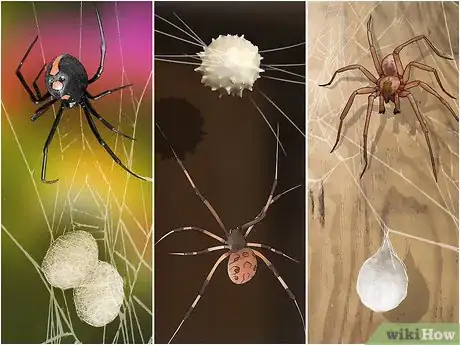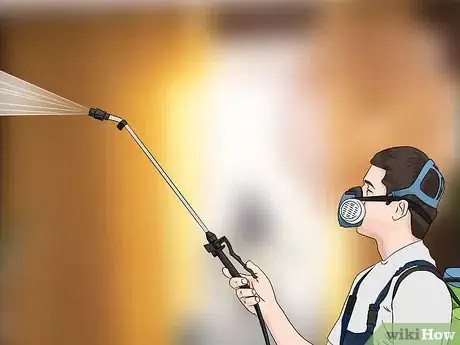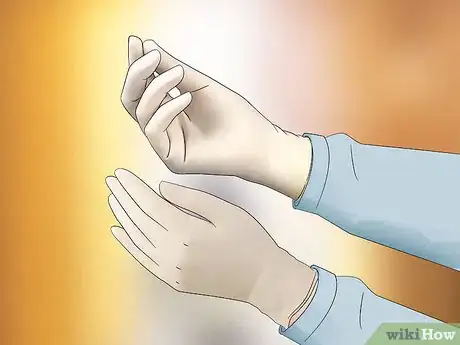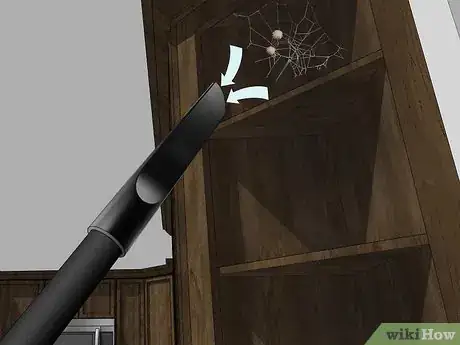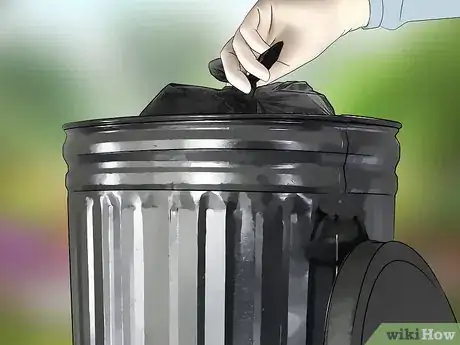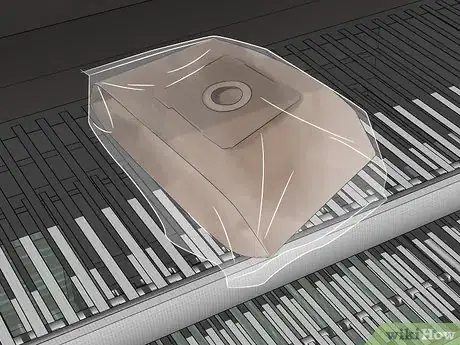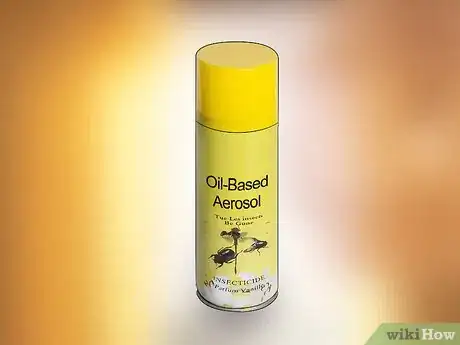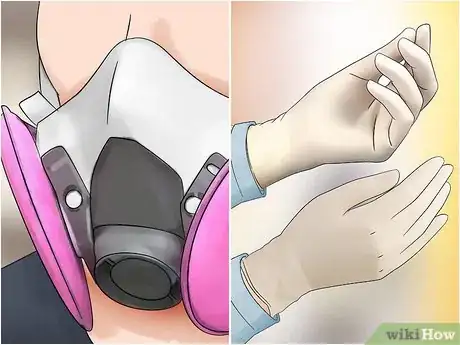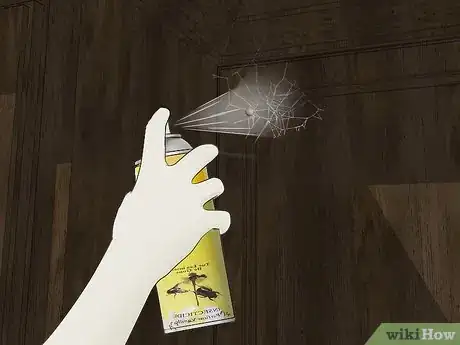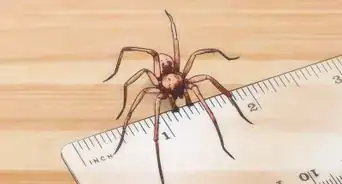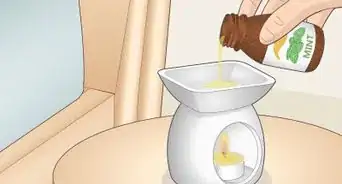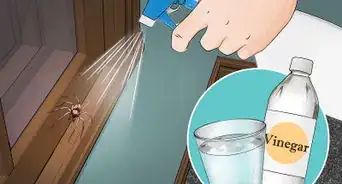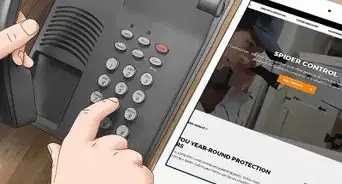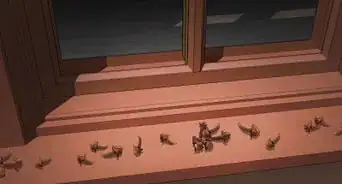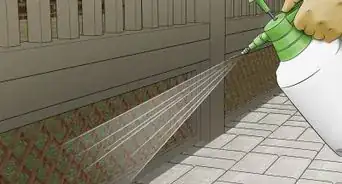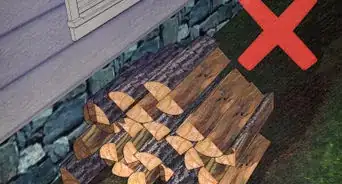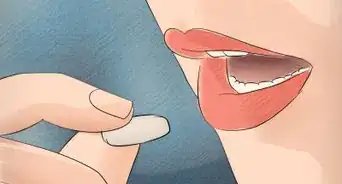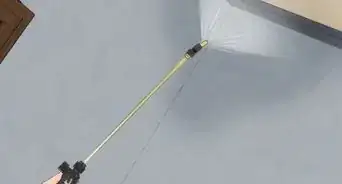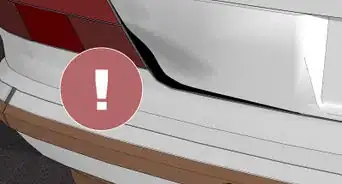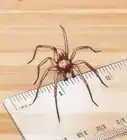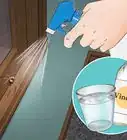This article was co-authored by Joshua Bloom. Joshua Bloom is a Pest Control Specialist and the Vice President of Operations of Standard Pest Management, a pest control company based in New York City. He has over 20 years of experience in the pest control industry and specializes in commercial and large facility pest control management. Standard Pest Control also specializes in ant, bed bug, cockroach, fly, and rodent control. Joshua is licensed by the NYSDEC (New York State Department of Environmental Conservation) for termite control.
There are 11 references cited in this article, which can be found at the bottom of the page.
This article has been viewed 138,195 times.
Most of the time, it’s easy to deal with spider eggs before they become a problem. Start by trying to identify the spider species. While most spiders are harmless, you should look for characteristics of poisonous spiders to stay on the safe side. If you’re dealing with a venomous species or major infestation, it’s wise to call in a professional. Usually, vacuuming up spiders and their egg sacs is the easiest and most effective solution. You could also spray a pesticide directly onto spiders and egg sacs. Just make sure your product is oil-based, as water-based pesticides are ineffective against egg sacs.
Steps
Ruling out Poisonous Species
-
1Identify the spider and egg sacs to rule out a poisonous species. Almost all spiders are harmless, but there are a few species with bites that require medical attention. If possible, check the egg sacs and any nearby spiders for characteristics of venomous species. Consider calling in a professional to deal with poisonous spiders.
- The various black widow species are distinguished by the red markings, usually in the shape of an hourglass, on their abdomen’s underside. They spin funnel-shaped cobwebs, and their egg sacs are beige to yellow, smooth, round, and 1 to 1.25 centimetres (0.39 to 0.49 in) in diameter.[1]
- Brown widows are venomous, but not as aggressive as black widows. The hourglass-shaped markings under their abdomen can be yellow or orange, and they have dark bands on their legs. Their egg sacs are also beige to yellow, but are covered with little silk spikes.[2]
- Brown recluse spiders have long bodies and slender legs. They are distinguished by a dark, violin-shaped mark on their back, and unlike most spiders, they only have 6 eyes.[3] Their webs are flat, patternless, and sheet-like, and their egg sacs are silky, somewhat rough and irregularly shaped, and average 1.5 centimetres (0.59 in) in diameter.[4]
-
2Have a professional deal with an infestation. It’s wise to call in a professional if you have a major infestation on your hands, such as a cellar with spiders and egg sacs at every turn. Among the poisonous species, brown recluse spiders are particularly difficult to control.[5]
- Brown recluse spiders can go months without food or water. Since they’re hunting spiders, they wander, hide, and are fast. Spiders that wait in their webs for prey are easier to control.
Advertisement -
3Wear protective clothing if you deal with a venomous species yourself. You’ll need to protect yourself if you don’t feel like hiring a professional just to deal with an egg sac or two. Before heading into battle, put on a pair of work gloves and wear long sleeves and pants.[6]
Using a Vacuum Cleaner
-
1Vacuum up spiders, webs, and egg sacs with a long attachment. In most cases, your vacuum cleaner is your best line of defense against spiders and their egg sacs. If the egg sac is in a vacuum-accessible spot, use an attachment to suck it up along with any nearby spiders.[7]
- You can also use a duster to remove any webbing and eggs.[8]
-
2Empty the vacuum bag outdoors. Take your vacuum outside to remove the bag. If it’s disposable, just seal it and throw it in a lidded outdoor trash container. If the chamber’s non-disposable, carefully empty it into a trash bag, seal the bag, and toss it an outdoor garbage bin.
- Spiders are fragile, so vacuuming one up will easily kill it. However, the egg sac offers a little more protection, so eggs or spiderlings might survive.
-
3Freeze the bag if you’re dealing with a venomous species. You might want to take extra precautions if you’re dealing with poisonous spiders. If possible, stick the vacuum bag in a freezer chest or cooler for several hours before you throw it in the garbage.
- Give your freezer chest or cooler a good cleaning when you’re finished.
Using an Oil-Based Pesticide
-
1Purchase an oil-based aerosol pesticide instead of a water-based product. Pesticide might be the way to go if the egg sac isn’t in a vacuum-accessible spot, if you don’t have a vacuum, or if you just don’t want to deal with lugging around the vacuum. Look online or at your home improvement store for a oil or petroleum-based product.[9]
- Since egg sacs are water repellent, water-based pesticides are ineffective.
- Go for a direct aerosol, or spray, product. Foggers are also ineffective against spiders.
-
2Follow safety precautions when using potentially dangerous chemicals. Stay on the safe side and wear gloves, long sleeves, and a breathing mask. If you have pets, check your product’s safety warnings for information about keeping animals away from treated areas.[10]
-
3Spray spiders and egg sacs directly. Spray the affected areas according to your product’s instructions. Even after using a pesticide, it’s best to sweep or vacuum the treated area.[11]
- Oil-based products are highly effective egg killers, but you don’t want to take any chances. In addition, if you just leave a web intact, it might trap insects and attract other spiders.
-
4Put down sticky traps if you’re dealing with hunting spiders. Sticky traps are basically pieces of cardboard covered with adhesive. If you’ve seen hunting spiders that run around on the floor, such as wolf or brown recluse spiders, place sticky traps along walls, behind furniture, and at potential entry points, like near cellar or garage doors.[12]
- Pesticides are more effective against web-weavers than hunting spiders, which can just run away from chemical spray.
- If you’ve sprayed an egg sac but the mother spider scurried away, you might have another egg sac on your hands sooner rather than later. Most spiders only need to mate once in their life, but can produce up to 5 egg sacs.
-
5Consider having an exterminator put down a chemical barrier. If you continue to have problems, a pesticide barrier around your home could be your best solution. If you’re dealing with a hunting species, you or the exterminator should also put down sticky traps.[13]
Expert Q&A
Did you know you can get expert answers for this article?
Unlock expert answers by supporting wikiHow
-
QuestionHow can I remove spiders?
 Joshua BloomJoshua Bloom is a Pest Control Specialist and the Vice President of Operations of Standard Pest Management, a pest control company based in New York City. He has over 20 years of experience in the pest control industry and specializes in commercial and large facility pest control management. Standard Pest Control also specializes in ant, bed bug, cockroach, fly, and rodent control. Joshua is licensed by the NYSDEC (New York State Department of Environmental Conservation) for termite control.
Joshua BloomJoshua Bloom is a Pest Control Specialist and the Vice President of Operations of Standard Pest Management, a pest control company based in New York City. He has over 20 years of experience in the pest control industry and specializes in commercial and large facility pest control management. Standard Pest Control also specializes in ant, bed bug, cockroach, fly, and rodent control. Joshua is licensed by the NYSDEC (New York State Department of Environmental Conservation) for termite control.
Pest Control Specialist
References
- ↑ http://entnemdept.ufl.edu/creatures/urban/spiders/black_widow_spider.htm
- ↑ http://cisr.ucr.edu/identifying_brown_widow_spiders.html
- ↑ http://www.idph.state.il.us/envhealth/pcreclusespiders.htm
- ↑ https://citybugs.tamu.edu/brown-recluse-egg-w-arrow/
- ↑ https://citybugs.tamu.edu/factsheets/biting-stinging/others/ent-3003/
- ↑ https://extension.tennessee.edu/publications/Documents/pb1191.pdf
- ↑ https://www.terminix.com/pest-control/spiders/removal/
- ↑ Joshua Bloom. Pest Control Specialist. Personal interview. 8 May 2020.
- ↑ https://www.ncbi.nlm.nih.gov/pubmed/26530954
- ↑ https://www.terminix.com/pest-control/spiders/removal/
- ↑ http://pestcontrolcanada.com/spiders/
- ↑ http://pestcontrolcanada.com/spiders/
- ↑ http://www.idph.state.il.us/envhealth/pcspiders.htm
- ↑ Joshua Bloom. Pest Control Specialist. Personal interview. 8 May 2020.
- ↑ Joshua Bloom. Pest Control Specialist. Personal interview. 8 May 2020.
About This Article
It’s easy to get rid of spider eggs using a vacuum cleaner. Use the long attachment on the vacuum cleaner and aim it at the spider eggs and any nearby spiders. Once you’ve removed all of the spider eggs, empty the vacuum bag into a trash bag outside and seal the trash bag tightly. You can also kill spider eggs using an oil-based pesticide. Spray the spiders and the eggs directly with the pesticide. Make sure to follow any safety instructions specified on the packaging such as wearing gloves or a breathing mask. If the spider infestation is very large, contact an exterminator to deal with the infestation professionally. For more information about killing spider eggs, like how to identify a poisonous species, read on!
